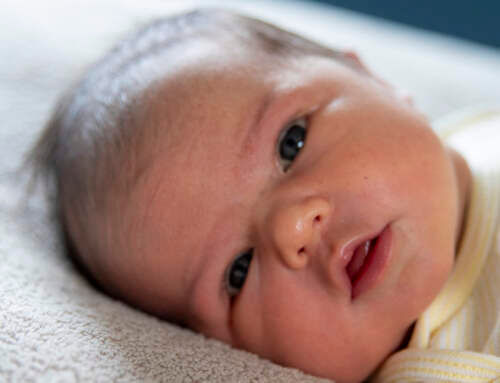
Over forty years ago, when I was a kid in Missouri, I would walk from Hixson Middle School, over to Webster Groves High School to attend modern dance classes. Some of the dances where tightly choreographed, some were looser, improvisational. In dance class and after school practice sessions, I studied movement, memorized steps, and sequences. More importantly, I learned to pay careful attention to the moment, and to move spontaneously in that grace filled place.
Years later, I have graduated from middle school, high school, a couple of colleges and even grad school. Now, educated, licensed and certified, I am a midwife. As part of my job, I provide women with care during pregnancy and birth. 1 These days I attend births mainly in my client’s home, and occasionally in the hospital. 2 I am present as babies emerge from their mothers’ bodies.
For me, the exact moment of birth is improvisational dance. While I have studied for years, and I know my part, I cannot know exactly what I will do until each particular birth unfolds.
For many decades, the routine for birth attendants was to deliver the baby from the mother, then immediately bring the infant toward the provider’s body like a football with one hand while immediately cutting and clamping the umbilical cord with the other. The baby was then briskly dried, wrapped in several blankets, and finally handed over to its mother.
In the twenty-first century, there is an increasing acceptance nationally and internationally of the importance of skin to skin contact between mother and baby immediately after birth. Dr Nils Bergman, the pioneer of Kangaroo Care for premature infants, has led this movement for years. When I began studying midwifery in the 1980’s, the usual procedure was for midwives to catch/deliver/receive the infant as it emerged from the vagina and immediately place it on the mother’s belly or chest. Immediate skin to skin contact is now de rigueur: childbirth education, YouTube videos, even hospital advertisements, all show babies being placed immediately on the maternal body. Currently at some hospitals, as the baby is born, it is swiftly moved up onto the mother’s belly and slid under a wide elastic band (used to hold the fetal monitor in place during labor) and the baby is then held firmly against the mother with this band for the next hour or so.
In the last decade, there is a growing movement to honor the birth pause – the time immediately after birth where, like the ‘pregnant pause’ of great storytelling, the world is full of possibility. The idea is to let the mother (who has just given birth) and the baby (who was just born) have a moment to just be, then to gradually move into their new roles. Generally, the baby (cord attached and pulsing) is guided to a soft spot, a landing pad if you will, between the mother’s legs where, when she is ready, the birthing woman can glance down and see her child for the first time.
For me, as midwife, the moment of birth is one I know well. It’s the moment when after months of gestating, waiting and preparing, after minutes, hours, or days of laboring, the baby finally emerges from its first home. It’s the moment where, finally, the mother gets to see, smell, touch her much anticipated newborn.
For me, as midwife, the moment of birth is like improvisational dance: I may anticipate what is likely to occur (labor, bearing/breathing down, baby out) but I cannot know how it will exactly unfold, until it does. Sometimes, I guide the baby into the mother’s outstretched arms. Sometimes, I sit back and watch as the mom reaches down and brings her baby from perineum to breast. Sometimes, I ease the new-born baby to soft towels mere inches from the newly-birthed mother, and we just wait a moment, cord attached and pulsing, we just wait… Every time, I get to pay careful attention to the Moment, and move spontaneously into the grace of birth, then sit in that moment where mother and baby are literally still connected, yet also two beings.
Michelle
May all babies be born into loving hands
- Yes, midwives do more than just attend births. We provide health care for women in all stages, phases and circumstances of life.
- Yes, midwives work in hospitals. In fact about 90% of Certified Nurse Midwives (CNMs) and Certified Midwives (CMs) that attend birth, do so only in the hospital setting.
- Different midwives (and others in the birth community) use one term, some use another. “Catch” “deliver” “receive” are all words that can be used to describe what a birth care provider does as a baby emerges. And each word can be emotionally and politically charged. (That last sentence was a grand understatement.)
- My husband Kevin does not understand how for millennia babies possibly survived without this crucial strapping in period. ;)



Leave a Reply